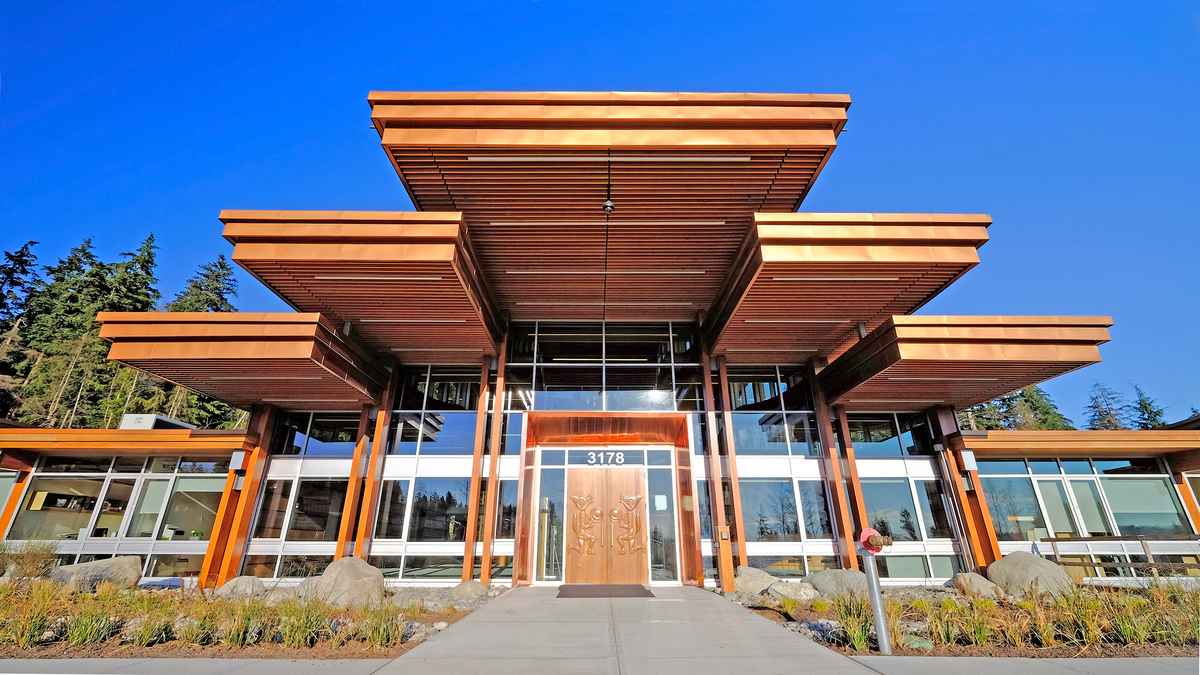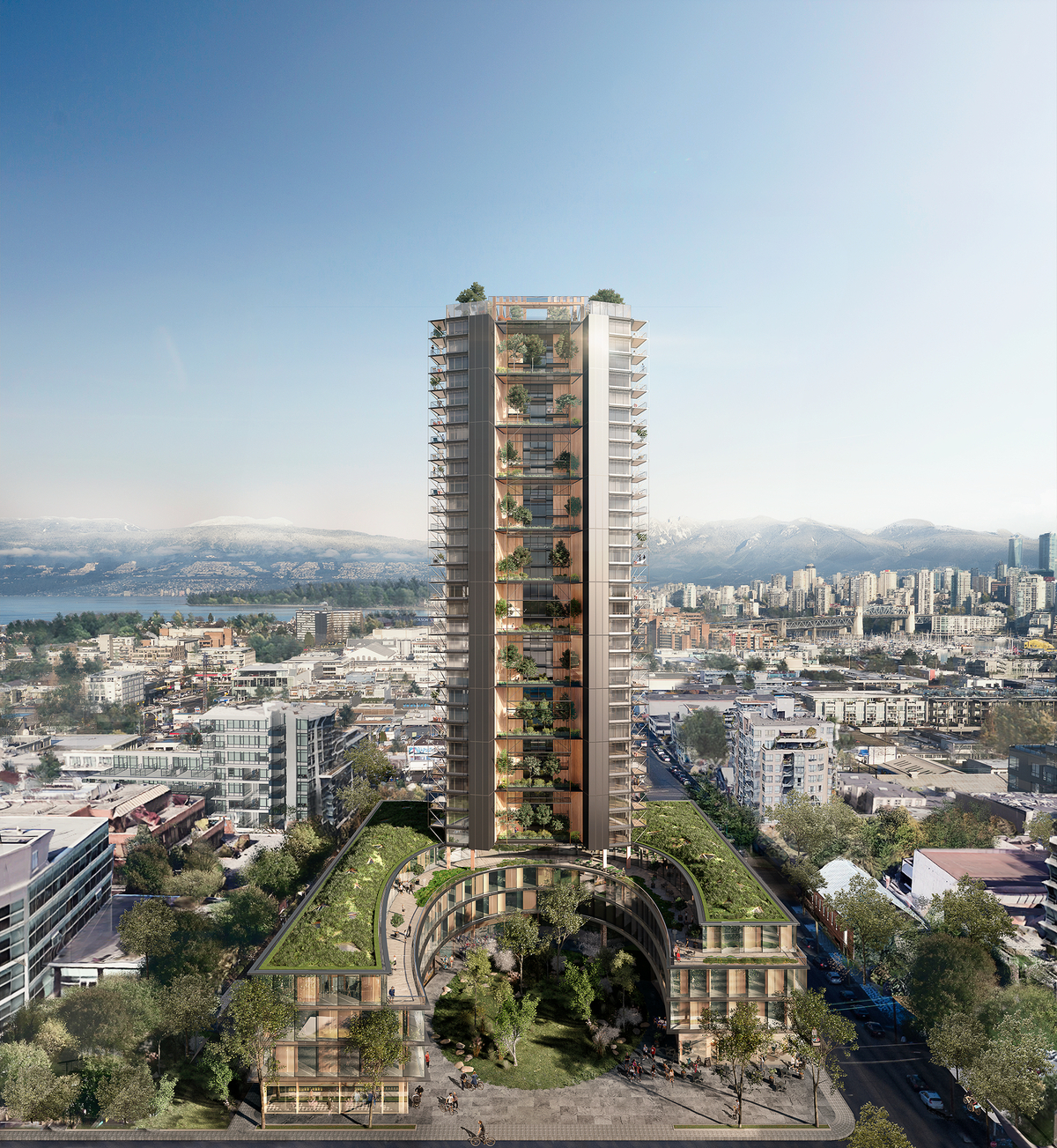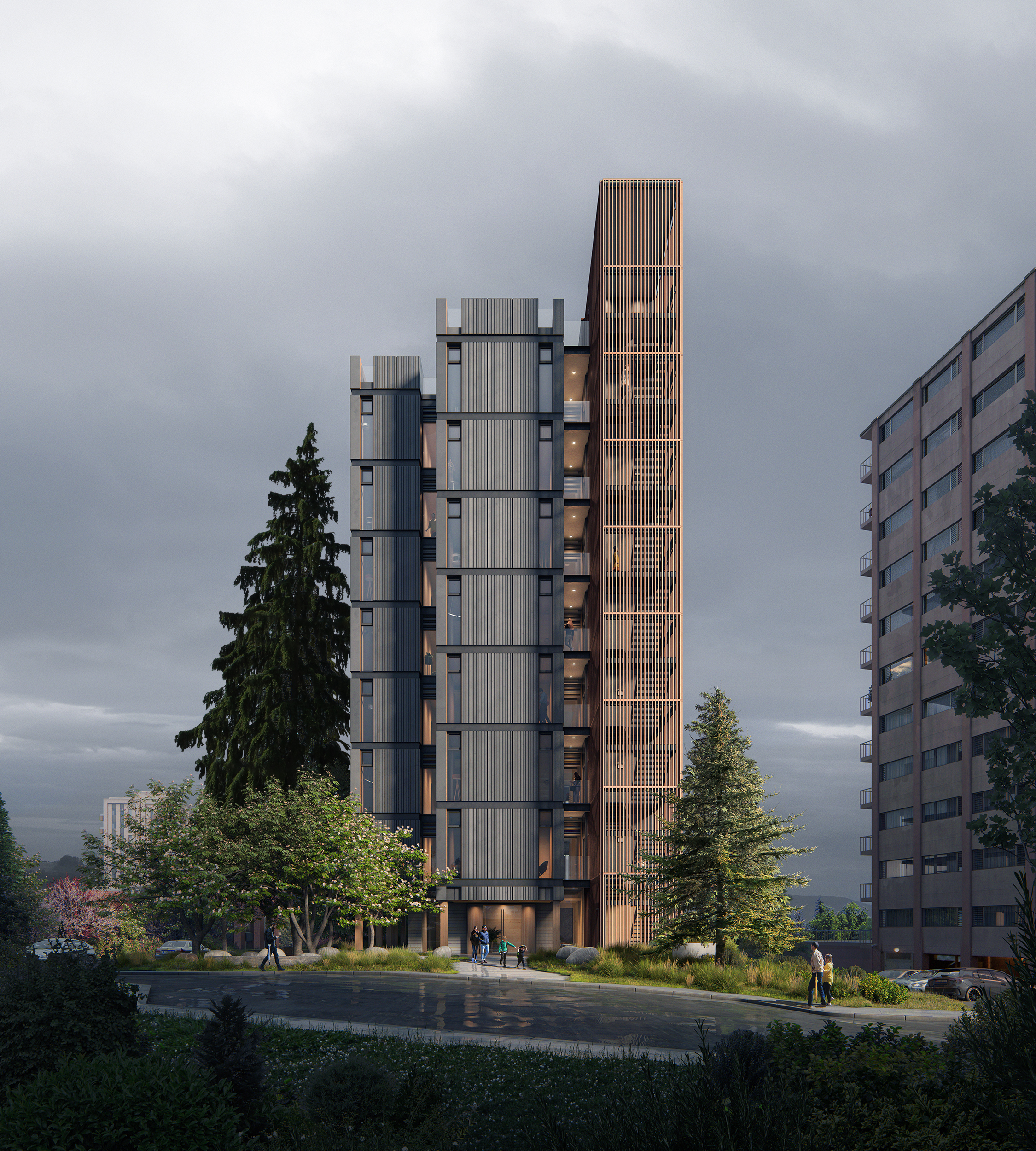British Columbia Gets Serious About Mass Timber Architecture
Michael Green talks about Canada’s wood resources and climate change.

Tsleil Waututh Administration and Health Centre by LTA Architects. Photo by Dr. Roman Trubka.
A decade ago, mentioning a wooden skyscraper would most likely have drawn disbelief or even hostility from most Canadians. For years, the line from the sustainability community was to reduce the use of wood and paper to preserve forests, the ever-shrinking “lungs” of our planet. But in the last few years, the environmental consequences of cement and plastic have become dire, with nearly 40 per cent of greenhouses gasses related to the building industry globally.
With this in mind, the government of British Columbia has undertaken a new initiative to fund and explore the building of massive wooden structures. Under the broadly defined umbrella of “recovery,” the government and Forestry Innovation Investment have set aside $4.2 million to be allocated to 12 mass timber demonstration and research projects. Disbursement of funds for the Mass Timber Demonstration Program will be administered by Forestry Innovation Investment based on the recommendations of the B.C.’s Mass Timber Advisory Council that includes Michael Green of Michael Green Architecture (MGA), who, more than a decade ago, coined the term “mass timber” to signify new technologies that allow different types of wood to be bound by glue and other means to create strong, fire-resistant materials from relatively young trees.
“Most of our forestry industry historically has served light-weight wood-frame construction—so buildings up to six storeys tall,” Green tells NUVO over the phone. “This mass timber program allows us to build buildings that are 30 to 50 storeys tall—that is in the long-term interests of our province from an economic point of view. It’s also in the long-term interests of the planet because it allows us to replace concrete and steel in cities with these mass timber products that actually sequester carbon and help us address climate change.”
“I’m really, really proud of the B.C. government for pursuing it,” Green continues. For years, regulations were not catching up with new developments in wood technology. Codes often forbade the use of wood above certain heights because of outdated fire codes. The Mass Timber Demonstration Program follows a noteworthy 2020 change in national building protocols that mark a move toward reasonable laws based on research instead of emotion.

A proposed wooden tower by architects Perkins & Will for Delta Land Development.
While the initiative funds projects for buildings up to 12 storeys, the future it opens up is full of opportunity. Green notes that British Columbia has long been a leader in forestry research, with world-class researchers and fabricators leading the charge. His own firm, MGA, recently completed the Forest Science Complex at Oregon State University, has plans to build mass timber buildings at Google’s headquarters, and also recently received the 2021Architectural Firm Award from the Royal Architectural Institute of Canada, which cited its work in wood technology. Green, however, insists that the movement toward wood architecture needs to be society-wide.
“What I’m proud of is the character and quality of the design and engineering services in the province, the strength of my peer group, and the number of outstanding wood designers,” he says.
The effects of this movement are sure to start being felt outside of the design community. Wood architecture has always been deeply tied to Canada’s West Coast. Green believes we would be remiss in not acknowledging the ancient architectural practices of Indigenous groups.

Keith Drive rendering by DIALOG.
“One of the communities that I think could be most benefited by this are actually our First Nations communities, who have a unique ability to connect forestry with traditional principles, deep historic values, and economic development opportunities,” he says.
Of course, this development must be sustainable to make it all worth it. Green agrees that forestry practices need to evolve just as building technology has.
“My advocacy for mass timber goes hand in hand with my deeply felt belief that old-growth harvesting has to end within the province as soon as possible,” he asserts. Though controversial, Green believes that, because mass timber technologies allow strong products to be made using younger trees, the harvesting practices in B.C. can change, and this change starts with our understanding of solar energy as a primary driver for building culture.
Those who may be upset about clear-cutting are right, too. Farms in British Columbia are often the result of clear-cutting as well, but we view it differently because the land is used to grow food. Green hopes we can start to look at our dwellings in a similar way.

Westbank’s 21-storey plan designed by Henriquez Partners Architects is one of the grant recipients.
“The reason we don’t see farms as clear-cutting is because we recognize that there’s a connection between the sun and growing our food that’s really important. We equally need to start to develop that understanding about the sun growing our buildings.
If we manage the forest correctly, he believes, “we’re harnessing the power of the sun to grow our homes,” which taken at face value is an elegant and rational statement that signals new ways of thinking about our relationship to our built environment and our wood resources in the face of climate change. If forests are managed correctly, British Columbia could provide a standard for renewable building materials for the nation.
So much of the future of the West Coast will come down to forest management. We should be closely following the innovators looking toward the future, while keeping an important foot planted in the past, where possibilities for harmony between the natural and built environment still inspire us. As we grow, so should our homes. At least as much as possible.

Proposed mass timber building designed by architects Perkins & Will for Delta Land Development.




